What if, after going through all of your photos, you still have too many “beats me” shots or “OK, but I just don’t care” photos?
WHAT TO DO WITH THE PHOTO PRINTS YOU DON’T WANT
The concept of “unwanted” photographs is complex.
After all, there’s a huge difference between a photo requiring you to squint to see whether it’s soup or a clogged drain vs. a picture of you with an abusive former partner. There’s a huge chasm between a blurry shot of the side of your neighbor’s car and a photo of unidentified party revelers.
Let’s start with what to do with print photos you don’t exposed and those you think nobody else would want.
Discard Unwanted Print Photos
I get it if that the idea freaks you out. I’m not saying to toss a good photo of Grandma into the trash along with the potato peels.
But all your blurry prints? The photos where you can’t identify a single human being, or pet, or location? A shot of the carpet you almost bought in 1972 but didn’t? The picture of your house after a blizzard that looks like every picture of every blizzard since you’ve been alive?
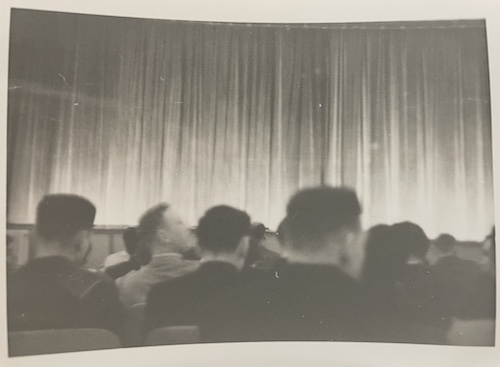
Where was this? Who are these people?
Are you having trouble getting rid of “worthless” photos? Here’s a neat trick. Take the print photo and snap a digital photo of it with your phone. Now, look at the digital shot. If you’d just taken that today, or yesterday, or last week, and were clearing out your photo stream, would you be inclined to keep the digital shot?
If you wouldn’t keep the digital version, let go of the print version. (Sometimes it helps to go through the process with a less sentimental friend, or your professional organizer.)
Photos that represent nothing and are meaningful to nobody can be tossed. Yes, really.
Shred Sensitive Print Photos
This is the go-to if you have a photo you no longer want, but also wouldn’t want strangers to get their hands on it.
I know what you’re thinking, and that does includes naughty photos. (I suspect that such photos became MUCH more common after the birth of digital photography.) But that’s not the only category you might want to shred.
Some people — and not just celebrities — would shred blurry or unsatisfactory print photos of their children to keep strangers from handling them.
You might also come across photos where you (or a loved one) doesn’t look great. Maybe it’s weight. Maybe it’s a bad haircut. Perhaps it was during a time or heartache or recovering from a long illness (or treatment of one). It’s perfectly OK to let go of photos that make you (or someone else) feel bad. To keep an insensitive person (or, paparazzi) from “rescuing” such photos from the trash, shred them first.
Discarding and shredding covers photos you don’t want out in the world, but what about photos you just have no need or desire, but you bear no antipathy towards them?
Give The Print Photos To Someone Who Will Value Them
If you don’t want a photo, but there’s nothing inherently “wrong” with it (however you define that), give it away:
- Send prints to the person in the shots — How delighted someone might be to know you came across a fun photo of them from years ago and wanted to share it! Turn it into a postcard or pop it into an envelope.
- Share the photo(s) with the family archivist — Does someone in your family serve this role officially? Perhaps you’ve got a distant cousin who would be charmed by shots of other cousins or great-greats? Just because they don’t excite you, future relatives might someday be pleased to have these photos in the family.
- Stick them on the company bulletin board — Chances are good that your current or former workplace has an unofficial historian. Even if you barely remember who the people in the print photos may be — maybe you were a summer intern thirty years ago? — someone at ACME might be thrilled to include shots in a company newsletter, history wall, or annual report. (Know anyone who has worked at the National Institutes of Health? Their NIH Stetten Museum is collecting photo donations!)
Donate Your Print Photos for Posterity
You might be wondering — if you don’t want a photo, why would anyone else?
The answer is, a lot of people, organizations, and projects. The key is the content of photos.
Years ago, I helped an author organize her book research. One day, we took a “field trip” to look at some items that she’d dug out of storage. We found an envelope filled with photos from the 1940s. The author’s father had fought in WWII and took photos of the liberation of concentration camps. After some discussion, we called a nearby Jewish Cultural Center and set up and appointment for her to meet with the director. Eventually, she donated the photos, which they used in a Holocaust memorial exhibit and then forwarded them to the United States Holocaust Memorial Museum in Washington, DC.
In another example, a client had photos, programs, and dance cards from mid-20th-century dances at an all-Black high school. The school no longer exists, but someone pointed us toward the high school sorority that sponsored the dance. The nearest local chapter appreciated the offer of photos, but lacked the space or personnel to handle them. However, they referred us to the national headquarters where the items were archived and displayed.
Photo contents will dictate possibilities. Talk with friends (or a professional organizer) to get ideas as to who may benefit from — and be delighted by — photos in your possession. Here are a handful of ideas, and I welcome you adding more in the comments section:
Libraries
Many library systems have local history or genealogy sections and welcome donations of old photographs, especially if they are geographically relevant.
Museums and Local Historical Societies
Local, regional, and national museums might be interested in photographs that depict historical events, places, or notable figures. Your local historical society (or one local to where a photo was taken) might be thrilled to preserve local history through your your prints.
Genealogical Societies
These organizations often accept photographs that could be useful to others researching family histories. The Society of American Archivists has an article, Donating Your Personal or Family Records to a Repository, which may help spark your imagination.
Universities and Colleges
Was your grandmother one of the first women to attend a particular college after it went co-ed? Perhaps your great-uncle played on a sports team at his university. If you’ve got photos that have clearly identifiable landmarks from a particular university, particularly if it’s in good condition and from a fairly bygone era, the university’s archivist or college historian might find the pictures useful for an exhibition or collection.
The same goes for anything at a college or university related to an event or organization. Got a photo of the marching band from 1972 performing at the Macy’s Thanksgiving Parade or a theater department’s production in 1956? They may love it! When I’m long gone, perhaps the Cornell University International Living Center might enjoy access to a photo of the graduates of the class of 1989 lined up in the Flag Room.

Paper Doll and fellow Class of 1989 Cornell ILC’ers
Content need not be university-specific. If your alma mater or any other institute of higher learning has history or anthropology departments, they may accept photograph donations for research purposes.
Government Archives
Local, regional, state or national archives may be interested in photographs that have historical significance. Obviously it’s best if you have context (diaries, notes on the reverse of the print photo), but if your print looks like it shows a significant event, see if you can share it.
Military and Veteran’s Organizations, VFW Posts, and Military Museums
Starting in the late 1930s, camera equipment became much smaller and more popular. American GIs took a lot of snapshots during World War II, the Korean Conflict, and the Vietnam War. If you’ve got family members who were veterans, you likely have print photos.
If you have any context or clarifying information and from what military division or post they came, don’t hesitate to see if there’s interest from your local VFW post, or check the donations policiesof groups linked below:
Greek Organizations
We tend to think of Greek fraternities and sororities as being college entities, but as my client’s story above noted, there were Greek organizations in high schools from the late 1800s through the mid 1970s. Here’s Paper Mommy and sorority sisters at a dance, circa 1953.
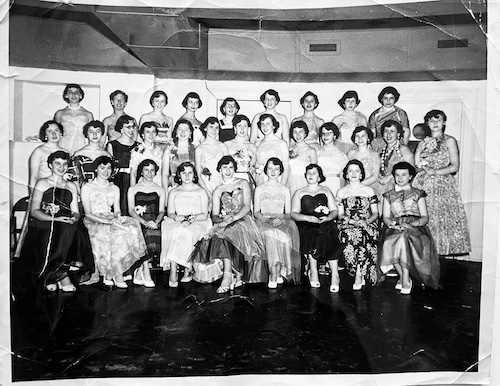
Special Interest Groups
Groups focused on specific themes (e.g., military history, railroads, architecture, Elvis) might find your photographs valuable.
Don’t assume only big city topics are of interest. Were your parents (or grandparents) or their siblings active in 4H Clubs or local cooperative extension services? Their photos may be perfect for an organization’s website or educational archives.
The National Wildlife Federation
Do you have photos of North American wildlife or wild places? The National Wildlife Federation is eager to accept donations of photos and photo usage rights to help raise funds for conservation.

(This probably isn’t the kind of wild life they’re seeking, but Paper Doll is an organizer and child of concrete, not a wildlife photographer.)
Online Projects
Websites dedicated to preserving history, such as the Digital Public Library of America (DLPA) (supporting education, scholarly research, and family research) or the Library of Congress’s digital collections, might accept copies of your prints for digital purposes. They probably won’t care about your eighth birthday party unless someone (else) significant attended, but if individuals in your family photos relate to significant events (or lived through significant eras), your contribution might be valuable.
The Photo Vault is an online project with the following mission:
Our ultimate mission is to preserve photographic history around the world for future generations….It is our mission to digitize and record lost, forgotten and otherwise discarded photographs for years to come. Our efforts are focused on preserving old negatives, developing old film, digitizing photos, postcards, journals and old letters, preserving and conserving them, and creating a record of the people, places, events and activities of our human race. After all, it’s our story!
Non-profit Organizations
Non-profits focusing on preservation, history, or culture might be generally interested in your photographs; if family members volunteered for these organizations, they may want them for organizational archives.
Authors, Bloggers, and Influencers
Do you have photos related to a favorite author or blogger’s sphere of influence? Do you follow a YouTuber or TikTok star who uses interesting photos for the backgrounds of their videos? For instance, an influencer who talks about wedding fashions might find this photo of my great-aunt’s late-1920s wedding intriguing.

(No, Paper Mommy isn’t tossing the print; this is just an example.)
How to Donate Photos
Obviously, you’re not going to just package up these photos and drop them on the doorstep of an organization.
First, contact a representative through email or by phone to describe the contents and context of the photographs you possess.
Next, ask if they are accepting donations. If they’re at a distance, offer to digitize and send a handful of photos to help them identify what you have.
If they’re unable to use your photos, inquire as to whether their parent or sibling organizations, or some expert they know, might find the photos useful.
Donating your unwanted photos ensures they will be wanted, preserved, appreciated, and accessible for future generations.
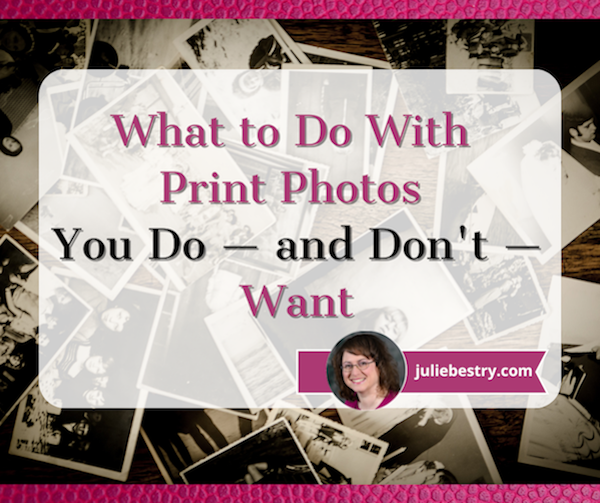
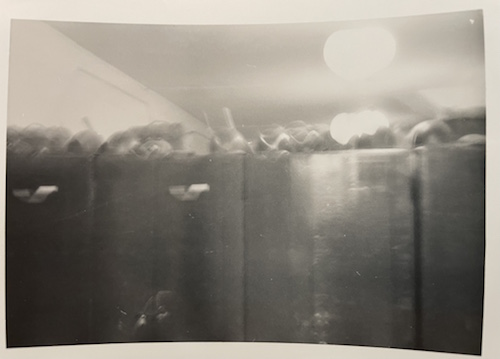
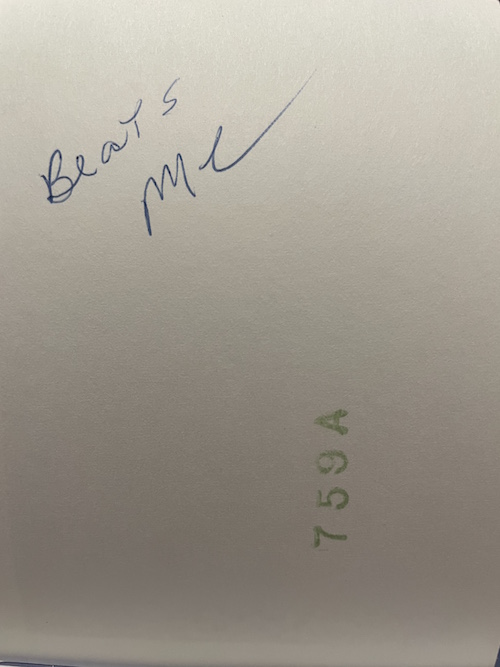
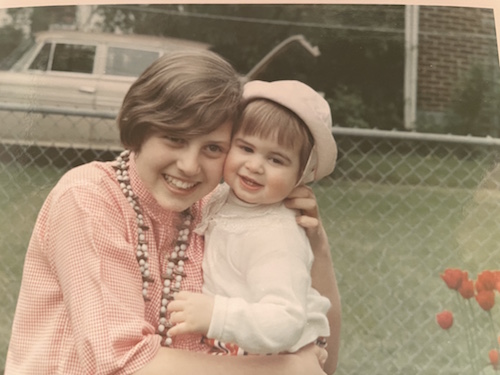













Pictures are such a difficult thing to deal with. I love the distinctions you make when talking about deleting digital photos and tossing prints. One of my clients (when I told her it was OK to toss the copies of a photo) said that it felt like she was throwing the person away. We did exactly as you suggested and mailed the copies of the photo to other family members who, my client decided, may want it.
Another client has boxes of framed photos. He does not want to remove them from the frames to keep them safely. We are setting up a rotation schedule for them.
All your suggestions for sending the photos on to those who may be able to use them are fabulous!
Thank you for all your great research and resources.
I’m glad to have your anecdote as another data point for handling letting go of prints. We humans are funny creatures; I bet your client never has trouble deleting digital photos.
The framed photos thing is interesting, because your client would surely hang the framed photos if he wanted to see them enough. A rotation schedule, like a museum’s rotating exhibits, sounds like a balanced approach.
Thank you for your kind words and for reading!
Great post, Julie! We had all of our children’s photos digitized when we developed them from 1999 to 2014. My husband then took all the CDs and added them to our family hard drive. Some CDs were damaged, others were not, and we were able to get the majority of our kid’s celebrations digitized pretty quickly. So, after we reviewed them and ensured they looked good digitally, we removed the box of CDs. It was so liberating.
Sounds great! Our family only had print photos from the 1940s until the early 2000s, when I got a digital camera (but I was the only one). I’ve only had phone photos since 2016, so almost everything I’ve got is print-only. I lazily take snapshots of print photos, but eventually need to scan everything. I can only imagine how far behind I’d feel if I also had CDs of photos!
Thanks for sharing your experience and for reading!
My photos span both physical and digital. I have to admit that I am not as good as I should be about just deleting bad photos. I do try. My husband just keeps them all, and even uploads them all to our shared family album. I’m not a fan of this plan, because it is too many. I always say, “Too much of anything is hard to enjoy.” Nevertheless, there it is.
I think you’ve put together a very good list of possible places to give your photos. That feels a bit overwhelming to me, but I might make the effort if I had a really good photo that I didn’t want. Otherwise, it feels like a lot of work. That’s just me.
This is an important post because pretty much every client I have has this struggle. Love Isabelle and Andi – highly recommend!
Too much of anything IS hard to enjoy. You are so right.
Certainly, the point isn’t to get rid of all your unwanted photos by donation. All those bad shots and duplicates and misery-making pics can be shredded and tossed. But for the photos that *feel* valuable, even if you don’t have any desire to keep them, letting that value belong to somewhere/someone else is a nice option to have.
Thank you for your feedback and for reading!
Great post!
I wish all of the historical photos we can’t keep would go to the right places, like Historical Societies, to be preserved.
Another place to try is dealers of vernacular photography who might be interested in vintage collections. Lots of collectors are selling or buying old family prints. Just look at eBay or Esty. But I can understand that it might be weird for your family photos to end up there…
Thanks for the kind words, and you are so right about selling photos. I’d originally figured I’d touch on that, but as it was, I had to whittle this down from almost 4000 words, so I’m SO glad that you made this point. I suspect that it would be easier to sell family photos where the members of the family aren’t particularly identifiable anymore, or are obscured or less of the focus than statues, landmarks, or nature. (Though I guess some buyers might use the photos for retro advertising or content.) It’s an intriguing idea.
Thank you for reading, Isabelle!
We’ve been going through my mom’s 40+ photo albums and digitizing what we want. When I say “we”, it’s been a project for my husband and I, not my siblings! They’ll reap the reward when it’s done.
It a job! Something that should not be left until you have time, because we all know the time never comes.
You’re absolutely right, but so many people feel like there will always be time later on. You and your husband are definitely going to deserve some bonus points for all this work.
Thanks for reading.
Getting film developed and printed was fairly expensive, so I imagine people might have been reluctant to part with any of the photos. And now we look at those photos and think someone kept it all these decades, it must have significance!
I have a terrible photo I took of the CN Tower when it was going up, but it marks a moment in history, so I keep it.
I’ve also got photos from my parents where I can’t identify anyone (or a house), but someone else might be able to, especially since I’m starting to connect with distant relatives who just might recognize someone. It’s really tough, but you’ve offered some excellent tips and resources here – especially Hazel’s book, which I’ve already read twice.
You’re so right. There was such an *investment* in tangible phones. But then we have to remember the Sunk Cost fallacy.
Do you feel emotionally tied to that CN Tower-in-progress photo? Does it feel more important to you than one you might find on the web? I think we need to be in the habit of asking those questions.
And yes, the “relative” thing makes the whole thing relative, pun intended. That’s why giving them to someone who WILL value them is such a good option. But here’s a question. If a third-cousin twice removed said, “Oh, that photo? That’s John Jacob Jingleheimer-Schmidt,” but that person, now identified, still doesn’t mean anything to you, would you want to keep the photo?
It’s all so complex! (And yes, Hazel’s book rocks! As does Hazel!)